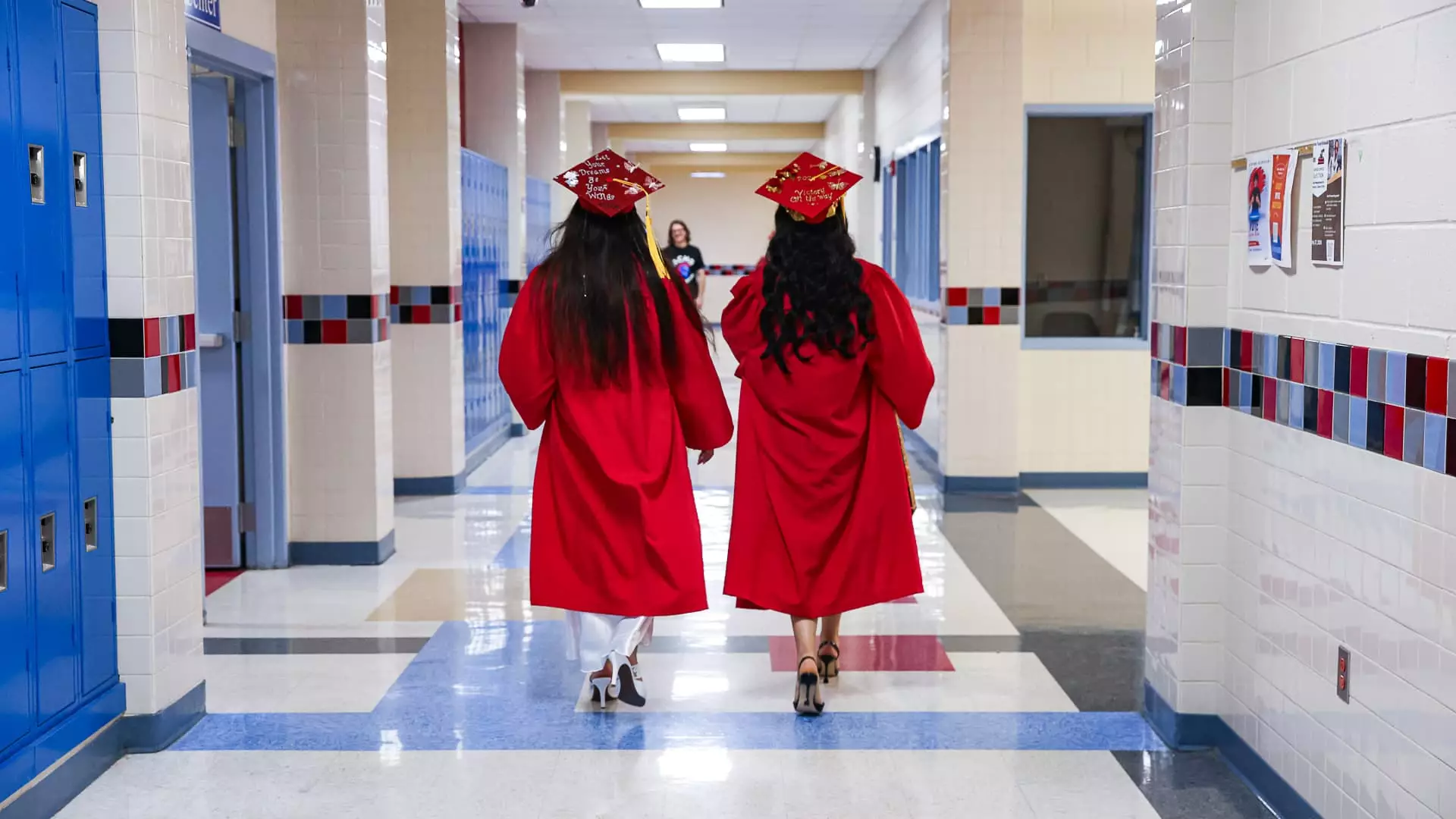The financial landscape for students entering college in the United States has never been bleaker. As the U.S. Department of Education prepares to resume collections on federal student loans in default, millions of current high school seniors are bracing to embark on a new and daunting journey of financial burden. Approximately 42 million Americans hold federal student loans, drowning under a staggering debt that is poised to grow even heavier in the coming months. With over one million high school graduates expected to take out new loans soon, the already pervasive crisis is destined to intensify, culminating in average debts that can soar to $40,000 or more for those pursuing a bachelor’s degree.
The rising tide of student debt is creating an unyielding cycle, one in which the promise of education becomes entwined with crippling fiscal woe. Even as previous administrations have attempted to alleviate this burden through loan forgiveness initiatives, the overall debt continues to rise relentlessly. Experts like Michele Zampini highlight that the issue isn’t just a matter of forgiveness but rather the systemic failures that perpetuate college affordability problems. Each semester, fresh faces join the ranks of indebted students, while many existing borrowers continue to navigate their way out of an ever-increasing debt trap.
The Reality of Rising Tuition Costs
The increasing financial strain on college students is exacerbated by the outrageous tuition hikes that have persisted for decades. According to reports, college tuition has surged by an average of 5.6% annually since 1983, outpacing inflation and other living expenses. This exponential growth reflects not just a trend but also a systemic failure in managing education costs. Today, families shoulder nearly half of college expenses, a stark rise from 38% merely a decade ago. This shift signals a significant departure from the days when state funding constituted a much larger portion of educational financing.
Many families find themselves ill-prepared to front the costs associated with higher education. As tuition outpaces earnings, borrowing becomes a necessity rather than a choice. This ruthless financial reality is compounded by dwindling state support for education, pushing backhungry, frequently at the expense of students’ futures. Universities and colleges are not merely institutions for learning; they have transformed into profit-driven entities, reliant on federal subsidies that enable them to hike tuition fees while simultaneously padding their endowments.
The Illusion of Non-Profit Colleges
In a striking commentary, U.S. Secretary of Education Linda McMahon pointed out the paradox faced by many so-called nonprofit colleges that profit significantly from federal loan programs. The hefty tuition they charge leads to students graduating with astronomical debts while institutions continue to thrive financially. This grave situation raises serious concerns about the ethics of a system that pits the financial aspirations of young people against an educational framework designed to profit first and teach second.
The current model fails to reflect a good-faith effort to confront the depth of the problem. Instead, as the cycle of borrowing continues unabated, we witness institutions investing heavily in themselves rather than in their students. The disparity between government funding and tuition is a complex dilemma, yet solutions remain evasive.
The state of higher education in America serves as a wake-up call to those in power. The shift in financial responsibility should not rest solely on the shoulders of students and their families. True reform is essential—legislative action must address the root causes of escalating tuition fees, and adjustments in funding models should reflect a commitment to education as an accessible right, rather than an exclusive privilege.
Ultimately, the path forward requires a radical reevaluation of the values we place on education and how we finance it. The financial burdens faced by students today are not just numbers on a ledger; they represent dreams deferred and futures compromised. Without a serious commitment to tackling these issues head-on, we will continue to witness a generation caught in an unforgiving debt trap, with the promise of education tarnished by the burden of repayment.


Leave a Reply